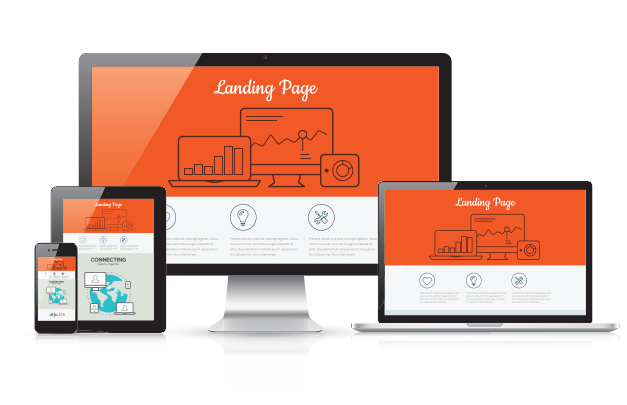We’ve deployed content marketing strategies for clients in a variety of industries, and one industry where we’ve seen it provide particularly excellent results is healthcare. It makes sense; content marketing is designed to capture people who are actively searching online, and who hasn’t Googled a medical question once or twice (or dozens of times)? Here’s how those in the healthcare industry can engineer their online marketing to better connect with those searchers in real time.
First, what is content marketing, again?
Content marketing is a marketing approach that increases site traffic, generates leads, and improves SEO over time using valuable (and free) content. Think informative blog posts, podcasts, and downloadable tools or guides. Basically, don’t interrupt what people want to consume — be what they want to consume.
Content marketing in the healthcare space
Thanks to technology, today’s health consumers are more proactive than ever when it comes to medical decisions. Most people turn to the internet to research conditions, procedures, and providers before they take action. In fact, according to the Pew Research Center, 59% of Americans have searched for health information online in the past year.
Hospitals, insurance companies, and independent health practitioners are leveraging this development by using content marketing. When a prospective patient turns to the internet for information on a condition or procedure, you want them to find you.
Healthcare’s content marketing leaders
Leaders in the healthcare space are no strangers to content marketing — two of the top hospitals in the country, Cleveland Clinic and Mayo Clinic, are often cited as revolutionizing healthcare marketing. Mayo Clinic hosts an extensive library of diseases and conditions, so if someone experiences concerning symptoms or a new diagnosis, there’s a good chance these guides will be one of the first resources they encounter online. Meanwhile, Cleveland Clinic’s Health Essentials blog is the country’s most-visited health blog. It features up-to-date articles with spot-on images; whether you’re looking for information on losing weight or living with Lyme disease, it’s a top-notch resource.
Northwell Health is another organization that is excelling in the online content space. Their blog, The Well, has a bevy of useful articles and their active social media presence encourages tagging and sharing. And Northwell recently rolled out integration with Amazon’s Alexa, allowing patients to ask for help locating office locations and estimating ER wait times using voice search.
Best practices for healthcare content marketers
Content marketing is a long game. Typically, we see exponential results as a client’s catalog of content grows, but it takes commitment to reach that tipping point. For this reason, it’s a good idea to go in with a long-term strategy and these best practices in mind.
-
Be clear about your goals. Are you looking to grow brand awareness, generate leads, or publicize a new facility? What you want to accomplish will inform your content strategy.
-
Use your content to answer patient questions. Think about the issues that potential patients are searching for and the questions or concerns they might have. What would be most valuable to those searchers in the moment?
-
Listen and interact with potential customers. Whether it’s through blog comments or Instagram feedback, let them know you’re listening. And it may be helpful to have a policy in place for emergencies. How will you handle a comment that seems to be an urgent situation?
-
Always keep conversion in mind. Begin with high-level content (for example a blog post about the symptoms of diabetes) that can be found by consumers organically. Once you have their attention, invite them to take action such as using a symptom checker or booking an appointment.
-
Be credible. By fact-checking content and using proper grammar, potential patients will see you as an authority they can trust.
-
Make your information sharable. If potential patients share content with friends and family, you can really broaden your reach.
-
Use video to make your content even more accessible, especially when it comes to how-to information that’s more easily demonstrated than explained in writing.
-
Provide interactive content such as symptom trackers and health bots to help users determine next steps. Do they need a trip to the emergency room or an appointment with a primary care physician? At a time when both patients and healthcare companies are trying to rein in costs and improve operating margins, helping patients decide what course of action to take can be a lifesaver — sometimes literally.
How to measure the ROI of your content marketing
Spending on healthcare industry marketing has increased dramatically over the past two decades, rising from $17.7 billion in 1997 to $29.9 billion in 2016. That trend is expected to continue, and if you’re committing a sizable budget to any kind of marketing, you’ll understandably want to measure its effectiveness.
When assessing the success of downloadable content, you can measure engagement based on views, clicks, downloads, and new leads. If you’re publishing content on social media, measure how many shares, mentions, and interactions you get. To get more nuanced feedback, ask your email subscribers, podcast listeners, and blog readers to fill out a survey on what they’ve found helpful (and what they’d like to see in the future).
Most importantly, look to your specific business metrics — facility and provider searches or booked appointments. For example, did appointment bookings with a specific provider spike after they published a blog post or white paper? Use any trends you observe to shape your content strategy going forward.
Want to learn more about how we create valuable content for the healthcare industry? Get in touch!



